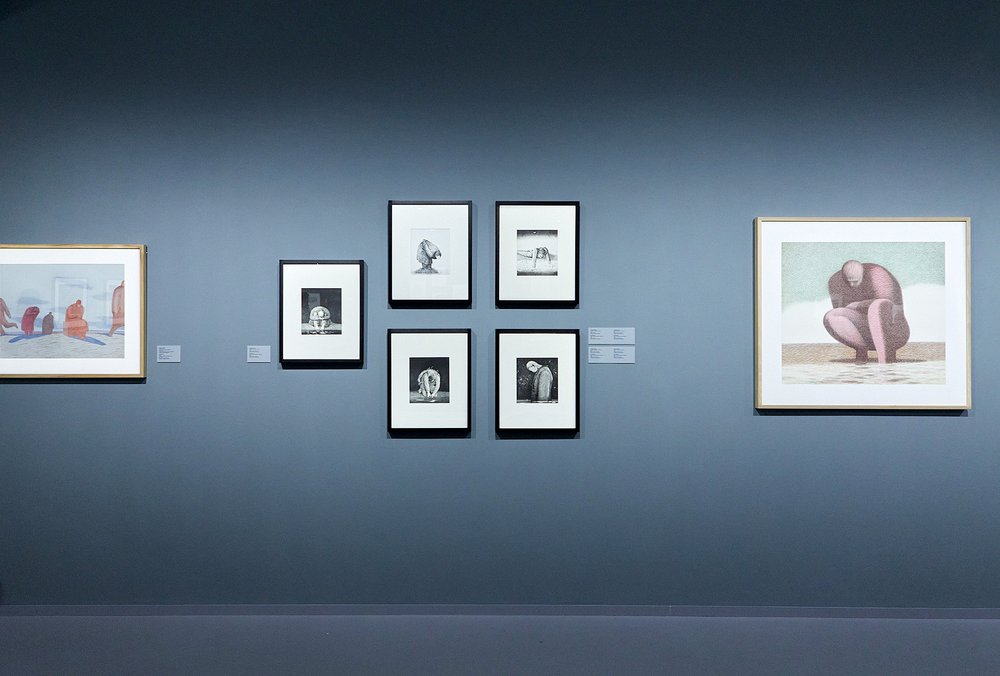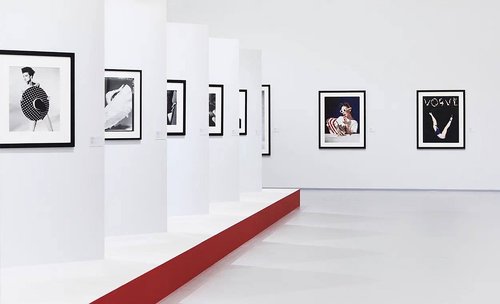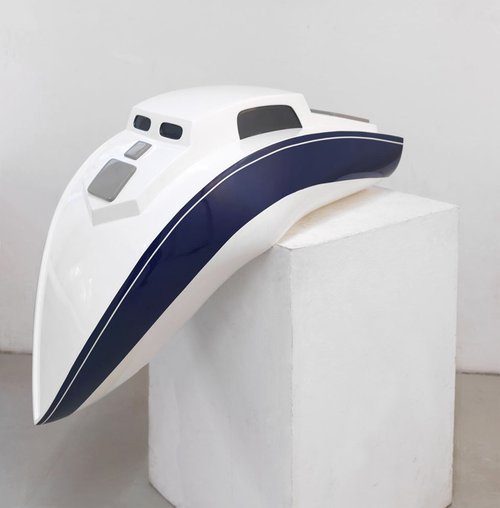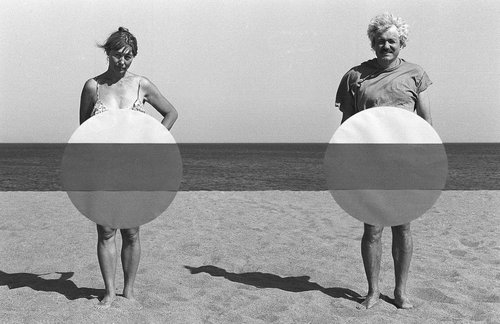Garif Basyrov: Drawing as Philosophy

Garif Basyrov. Another Dimension. Exhibition view. Moscow, 2025. Photo by Anna Ekomasova. Courtesy of Multimedia Art Museum, Moscow
An exhibition of artist Garif Basyrov entitled ‘Another Dimension’ has opened at the Multimedia Art Museum in Moscow showing how in the sixty years of his short life, he managed to create a unique visual language, sophisticated and captivating even for the uninitiated.
Garif Basyrov (1944–2004) had few illusions about his fellow human beings, whether good Soviet citizens or humanity at large. It would have been impossible for someone with a biography like his. He was born in ALZHIR, a women’s labour camp in Kazakhstan, where his mother had been imprisoned. Many of the inmates were wives of political prisoners who had been shot or imprisoned for ‘treason’. But there is nothing overtly political or critical in Basyrov’s art.
Looking at his drawings and etchings, one is reminded of the term ‘outsideness’ coined by the Russian American anthropologist Valery Yurchak. The researcher used it to describe the state of mind of the population of the USSR – people who lived and often prospered under the Soviet system but who tried to ignore it as far as they were able. But in Basyrov’s case, it was not just the Soviet system that he and his characters turned their backs on, but any system.
His career was relatively successful. He had a passion for drawing from an early age studying at the famous Moscow Secondary Art School, then in 1968 he graduated from the Art Faculty of the Institute of Cinematography (VGIK). His graduation project was a series of illustrations for The Master and Margarita by Mikhail Bulgakov, an anti-Soviet sensation at the time. The novel, which had been banned for decades, was first published in a censored version in 1966–1967 in several issues of the Soviet magazine Moskva.
In the 1970s and 1980s, he made a name for himself with his surrealist illustrations for Chemistry and Life – a mildly liberal popular science magazine that commissioned illustrations from many artists whose style did not quite fit within the constraints of socialist realism. He sent his caricatures and illustrations to international competitions – one of the few ways for an artist from behind the Iron Curtain to gain international exposure – and he won a few prizes. It was only in the 1990s, however, that his work became better known to a wider public thanks to several solo exhibitions in Russia and abroad.
Basyrov died suddenly, the day before his 60th birthday and perhaps, the true extent of his talent was only revealed to a wider audience posthumously. Not long after his death, a solo exhibition was held in his memory at the State Tretyakov Gallery. In 2007, the exhibition project ‘Garif Basyrov’s Inhabited Landscapes’, organized by the Kovcheg Gallery, took place simultaneously at six different venues in Moscow.
It was accompanied by a catalogue published by the same gallery. Ten years later, another solo exhibition, also called ‘Inhabited Landscapes’, was presented at the Pushkin State Museum of Fine Arts. The current exhibition at the Multimedia Art Museum, Moscow (MAMM), which has been curated by Anna Zaitseva and Maria Lavrova, is a good addition to this series. It includes drawings and prints made by Basyrov in the 70 and 80s, magazine illustrations and assemblages created in what were the last years of his life. The works are on loan from the State Tretyakov Gallery and several private collections.
Basyrov worked in series, exploring subjects in depth from different angles. In the 1980s he developed his style, which is reflected in his best-known series: ‘Inhabited Landscapes’, ‘Narcissus’, ‘Sports’, ‘Under the Load’, ‘Space’, ‘Wind’, ‘Townsfolk in the Countryside’ and ‘Cornered’. In them he manages to change the nature of his media - drawing, etching and lithography – from the intimate and unobtrusive to the monumental. On a large sheet of paper there is often just one heavy, solid human figure in a deserted landscape with vast expanses of land and sky, a low or very high horizon line adding to the illusion of wide-open space. They are either self-absorbed (‘Narcissus’), frozen in sleep, contemplation or meditation (‘Inhabited Landscapes’), or helplessly swept away into the void by an impersonal, merciless force (‘Wind’). Sometimes there are several of them, engaged in seemingly absurd, meaningless activities - making doomed attempts to communicate (‘Dialogues’), fighting each other or exercising (‘Sport’, ‘Townsfolk in the Countryside’). Laconic, balanced and calculated compositions suggest a quest for eternity rather than improvisation or sketchiness. Each of these figures or groups could easily become a monument, a sculpture in bronze or stone. Basyrov has developed several types of hatching, monochrome and polychrome, that are unmistakably his. His drawing is so meticulous and neat that it is reminiscent of weaving or embroidery.
Garif Basyrov had a penchant for the surreal and the absurd – but this absurdism is also unmistakably his: there is little irony, rather compassion and even softness. His awkward figures staring into the unwelcoming universe above them in ‘Space’ are not caricatures, but wistful symbols of the human condition. As art critic Galina Yelshevskaya noted in her article for the exhibition catalogue published by the Kovcheg Gallery in 2007, “in most of [his] works there was a very complicated attitude towards the subject – a mixture of mockery with poetry and judgement with co-presence”. Long before the Instagram influencers, he discovered their signature trick of positioning a figure with its back to the viewer, facing the landscape, so that the viewer inadvertently identifies with a figure. This type of composition recurs in his work year after year.
In the last decade of his life, Basyrov began to explore new avenues in his art when he turned to abstraction such as in the ‘Trivia’ series, began experimenting with collage and mail art, and created a series of tiny, laconic assemblages made from pieces of wood and small household objects. Cryptic and faceless, yet with the proportions of a human figure, they contain subtle references to iconic sculptures from different periods of art history. The artist called them Incubi. In his retrospective at MAMM, these mysterious creations has been planted in a box of sand. The installation is reminiscent of a ceremonial procession – or a miniature cemetery with coloured tombstones.
Garif Basyrov. Another Dimension
Multimedia Art Museum, Moscow (MAMM)
Moscow, Russia
26 April – 22 June 2025






















